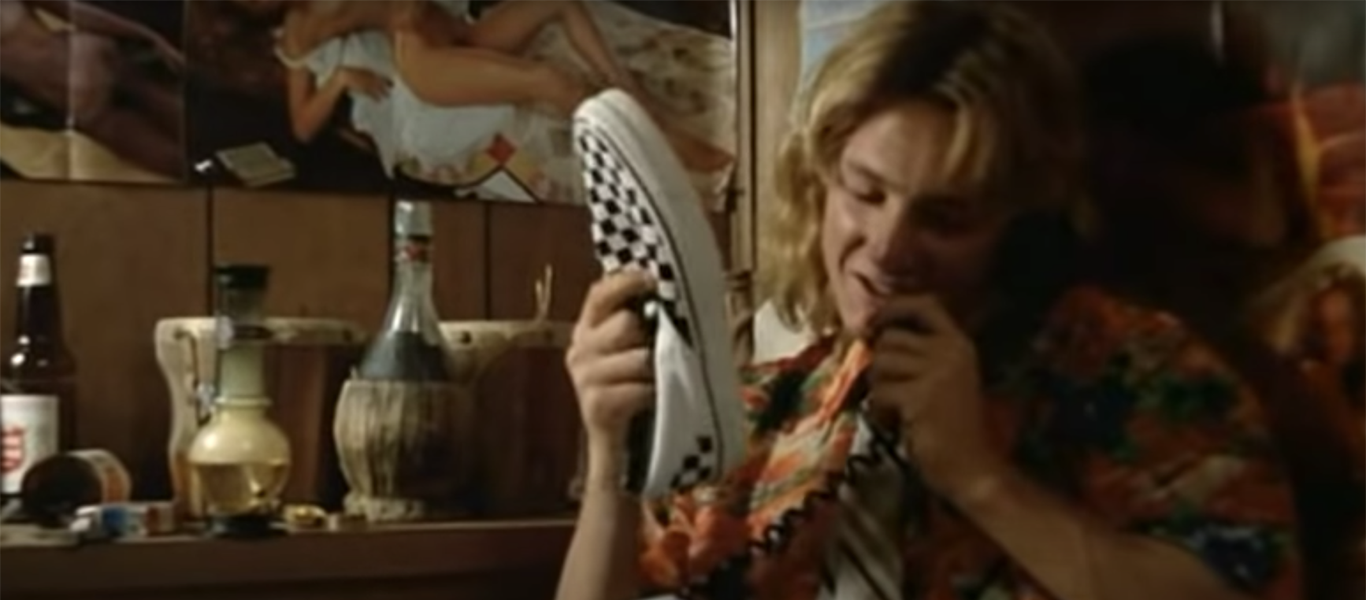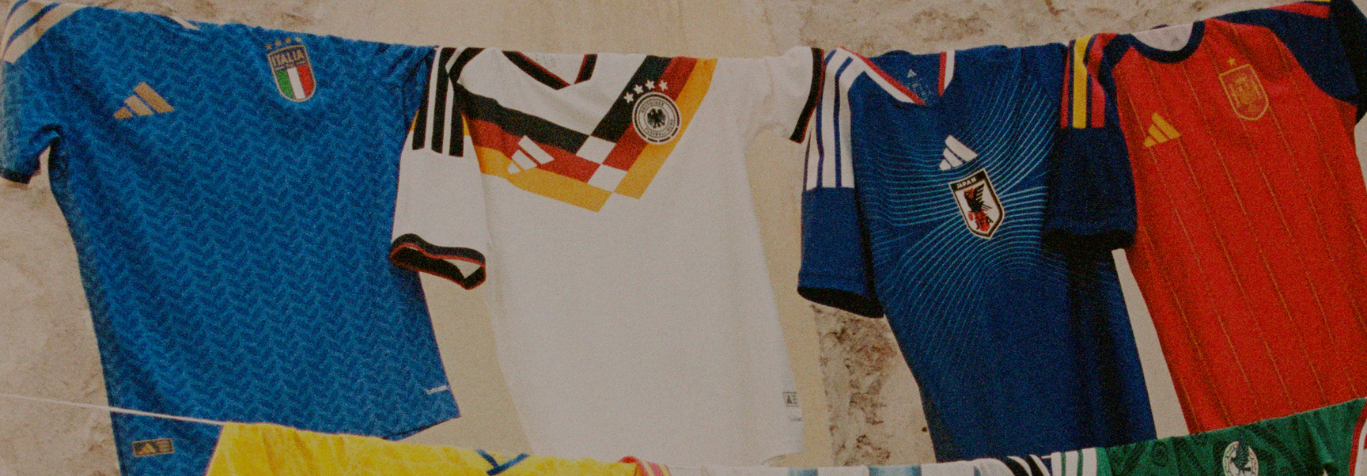Jeff Spicoli sits in a bedroom with posters of naked women plastered onto wood-panelled walls, a shoebox in his lap. He hits a bong while talking on the phone. He opens the shoebox and pulls out a fresh pair of black-and-white checkerboard slip-on Vans. Then he smacks himself in the head four times.
“That was my skull! I’m so wasted!” he laughs.
Sean Penn’s iconic portrayal of surfer dude Spicoli in the 1982 cult classic film Fast Times at Ridgemont High became a snapshot of quintessential California skateboard culture. And what’s more California skater than Vans?
Tracing the popularity of Vans checkerboard slip-ons, it’s impossible to overlook the influence of Fast Times. This was the film that made Vans famous. The checkerboard slip-on became a cultural phenomenon almost overnight, sparking a national demand. They sold millions of checkerboards after the movie was first released.
The checkerboard slip-on has become a staple of American footwear culture, up there with Nike and Converse. The recognizable patterned shoe is popular among skaters, hipsters, streetwear fanatics, and regular Joes. The high-contrast pattern is bold, but it’s also simple, which is why it has remained a favorite since the 1970s.
So how did it all begin?

Vans’ Checkered Past
The Van Doren Rubber Company was founded by Paul Van Doren, his brother James, and friends Gordy and Serge. In March 1966, they opened their first retail shop in Anaheim, California. They manufactured shoes and sold them directly to the public — a unique business model at the time.
By the late 70s, skaters and teens all over Southern California were sporting Vans. They were known for their sturdy rubber sole and customizable canvas. Skaters wore them for the extra-thick outsole, which lasted longer than other shoes on the market.
We can thank California skater kids for the checkerboard pattern. Steve Van Doren, Paul’s son, was fresh out of high school when he noticed local teen skaters colouring in their canvas slip-ons with a checkerboard pattern. Vans adopted the pattern, and the iconic look was born.
Hot off the success of Fast Times in the mid-80s, Vans wanted to diversify. It started making athletic sneakers, but it was up against athletic giants like adidas, Nike and PUMA. “It wasn’t selling,” Steve Van Doren told Sneaker Freaker, “People don’t know Vans for that.” This failed expansion landed Vans in financial trouble. In 1984, the company filed for Chapter 11 bankruptcy protection.
View this post on Instagram
Back to Basics
In the 1990s, with bankruptcy behind them and a $12 million debt repaid, Vans was on the upswing again. An era marked by skate events and the Vans Warped Tour looked promising. But the skateboard boom of the 1990s also brought new competitors, like Osiris and DC.
Compared to the younger skate shoe brands entering the market, Vans looked dated. Jonathan Evans wrote in Esquire that by the early-2000s, Vans was “irrelevant.” In 2002, Rian Pozzebon was brought on to revamp the brand. He wanted to mess with the classic core models like the Authentic, Slip-On, and Old Skool.
“We took a bunch of classic silhouettes and rebuilt them, trying to make them as close as they could be to the original USA specs,” Pozzebon told Esquire in 2017. This shift back to their roots was the key to Vans’ success. The company riffed on old classics, but maintained the authenticity that Vans is known for.
Once they got their footing and reclaimed their identity, Vans has enjoyed another renaissance. The mid-2010s were fueled by limited-edition collaborations with brands, artists, designers, and franchises. Vans has collaborated with Star Wars, Supreme, The Simpsons, Disney, Murakami, and many others. The shoe is a perfect canvas for artwork and allows for creative expression.
Obviously they’re doing something right. Checkerboard Vans have been sported by celebrities, influencers, and models around the world. Kristen Stewart stamped the Vans waffle sole into cement during the Hollywood Walk of Fame footprint ceremony. Frank Ocean even wore them to the White House.
Hit up jdsports.com for all your Vans rotation needs.
https://twitter.com/TeamFrankDaily/status/788843304423137281?ref_src=twsrc%5Etfw%7Ctwcamp%5Etweetembed%7Ctwterm%5E788843304423137281%7Ctwgr%5Eshare_3%2Ccontainerclick_1&ref_url=https%3A%2F%2Fwww.gq.com%2Fstory%2Ffrank-ocean-white-house-vans-interview
Emily Latimer is a freelance journalist based in Canada. She writes about podcasts, mental health, and cultural moments in history.



